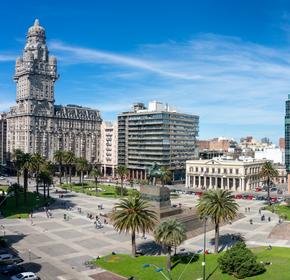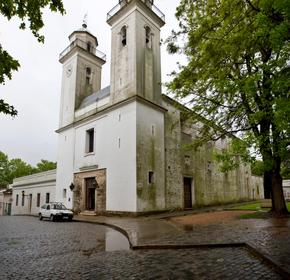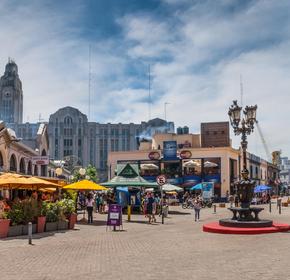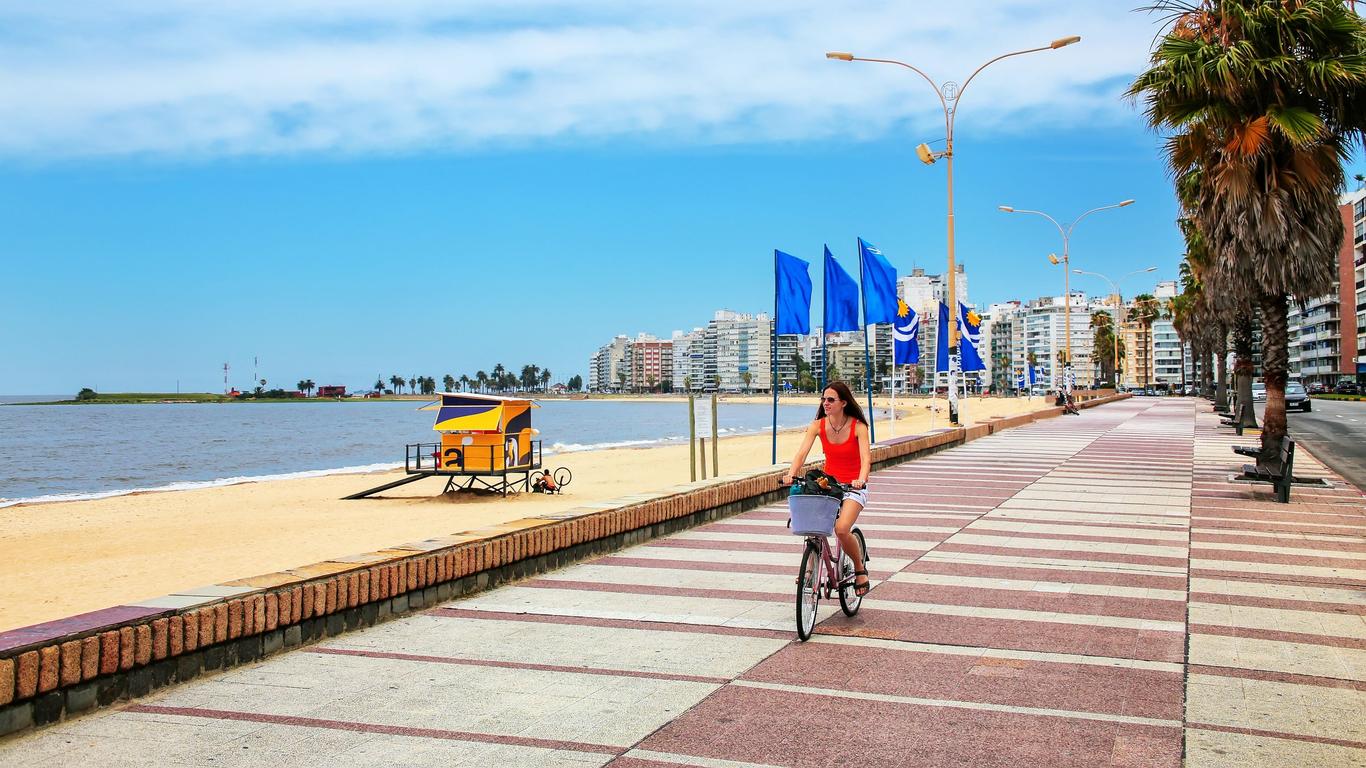
Montevideo travel guide
Montevideo Tourism | Montevideo Guide
You're Going to Love Montevideo
Montevideo is set along the banks of the Río de la Plata. Visitors will be struck by the historic architecture of Ciudad Vieja (Old Town), striking mountains, and the Spanish and Portuguese influences. For views of the entire city, check out the Fortaleza del Cerro, stroll through the Plaza Independencia, or go for a swim in the Carrasco neighborhood.
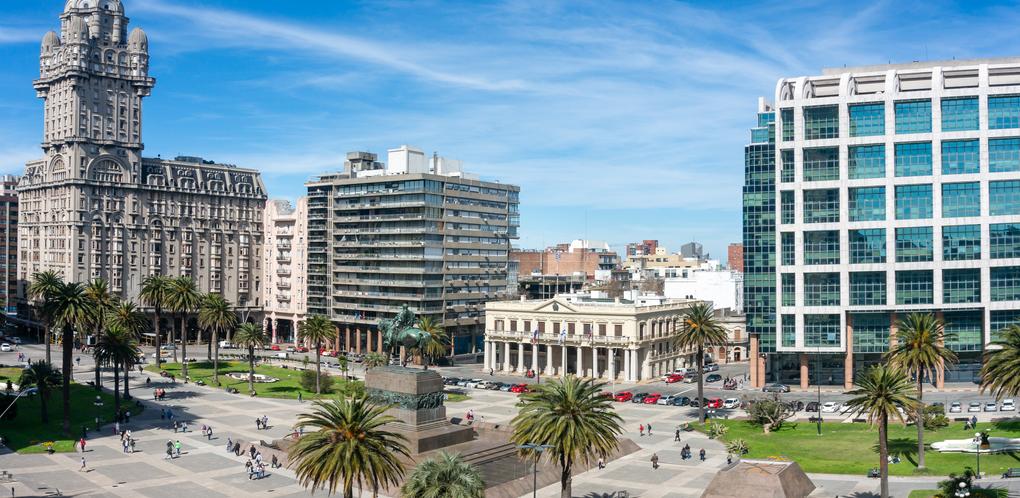
Top 5 Reasons to Visit Montevideo
1. The Rambla
The Rambla is a 17-mile-long boardwalk along the coast. Enjoy the fresh breeze while sipping a "mate", herbal tea poured into a hollow gourd for sweetness.
2. Go Back in Time in Ciudad Vieja
Spend an entire day rummaging old bookshops and antique stores, and then hit the Mercado del Puerto around lunchtime for grilled meats, stews, and market fare.
3. Dinner and a Dance
Watch a tango show on Fridays and Saturdays, or participate in a milonga, a group that tangos just for fun.
4. Scour the Flea Markets
Latin America's largest flea market, the Feria de Tristán Narvaja, runs on Sundays and sells everything from tortas fritas to old cameras and furniture.
5. Come for Carnaval
Carnaval runs for a week in February, which begins with the main "llamadas" in the south part of downtown Montevideo. Take in the colorful folk performances, live dioramas, and nighttime celebrations of Murgas.
What to do in Montevideo
1. Plaza Independencia: A View to Remember
No matter which angle you set up from, the Plaza Independencia offers breathtaking views you'll never forget. You could take a promenade of her spaces and streets from the ground and this pedestrian view will open up details about the stunning buildings, greens, and fountains. You can experience its beauty from nearby buildings like the Solis Theatre or the Executive Tower. Or you could compare the views from the Gateway of the Citadel versus the Artigas Mausoleum at its very heart. No matter how you cut it or from where you stand, the Plaza is a breathing monument to Montevideo.
2. Playa de los Pocitos: Where Beaches are Barrios
"Playas" are just a way of life in Montevideo. In fact, beaches are so prevalent and so intertwined with everyday life that neighborhoods or "barrios", as they're better known, are created around them. Picots is one such upscale barrio where, besides finding scores of teenagers playing soccer and volleyball, you'll be able to tuck into great open-air restaurants and chic shops. Picots should not be labeled as "just a beach district", however, because there is no such thing in Montevideo. The neighborhood has its share of architectural beauty with the nearby Casa Darnaud and Casa Towers, as well as the Escuela Brasil, named as a National Heritage site in 2002.
3. Iglesia Matriz: A Church on the Steps of the Port
The "puerto" barrio (which is the port district) is home to the impressive Catedral Matrix or the Iglesia de la Matriz. The ecclesiastical structure dominates the Plaza Matriz and is located in the Ciudad Vieja neighborhood. Its simple exterior of 8 columns opens to a stunning interior full of zenithal paintings, ornaments, and sombre but beautiful ceremonies. The church is also the home for voting on election day and features a beautiful little park and fountain outside.
4. Mercado del Puerto: A Bustling Bazaar!
Use your time winding around the Mercado del Puerto wisely: there is a lot to do and see and you'll find your senses competing for your attention as you try and take in everything at once. This is Montevideo's oldest market. It's not a makeshift set up: although this "market" may seem informal, it is here to stay, with its wrought-iron superstructure that provides roofing for many steak restaurants. There are always artists and musicians hanging around as well.
5. Museum of Art History: Art and its Antecedents
Whether you're a self-professed art lover or not, the Museum of Art History in Montevideo features a robust collection from civilizations and cultures all over the world. Besides featuring pieces form Hellenic and Egyptian traditions, the museum also puts special emphasis on pre-Columbia art and indigenous cultures. The preservation as well as the exhibition of these historical works is what the Museum of Art History specializes in. It's a great way for travelers to understand the significance and evolution of Montevideo into its modern-day avatar.
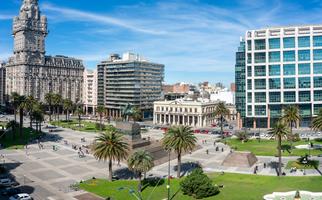
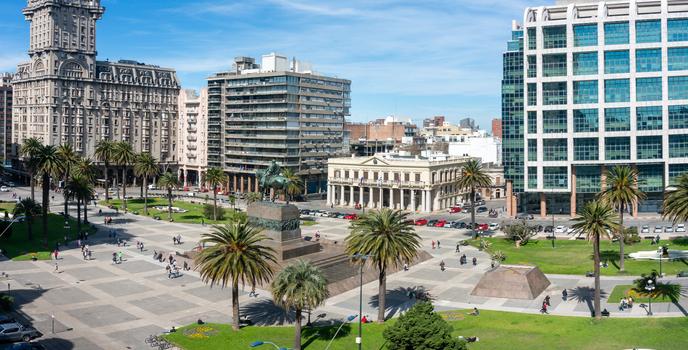
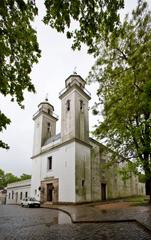
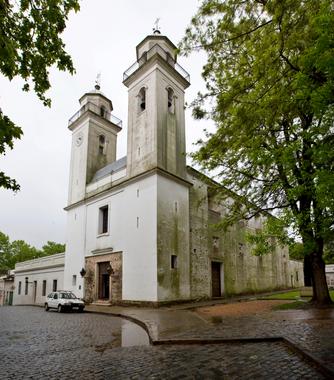
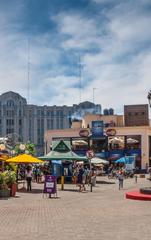
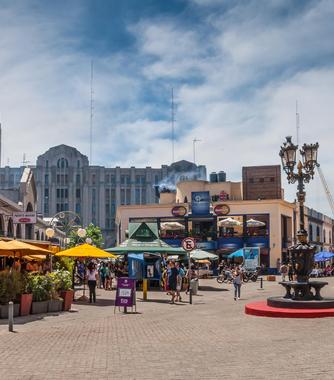
1. Plaza Independencia: A View to Remember
No matter which angle you set up from, the Plaza Independencia offers breathtaking views you'll never forget. You could take a promenade of her spaces and streets from the ground and this pedestrian view will open up details about the stunning buildings, greens, and fountains. You can experience its beauty from nearby buildings like the Solis Theatre or the Executive Tower. Or you could compare the views from the Gateway of the Citadel versus the Artigas Mausoleum at its very heart. No matter how you cut it or from where you stand, the Plaza is a breathing monument to Montevideo.
2. Playa de los Pocitos: Where Beaches are Barrios
"Playas" are just a way of life in Montevideo. In fact, beaches are so prevalent and so intertwined with everyday life that neighborhoods or "barrios", as they're better known, are created around them. Picots is one such upscale barrio where, besides finding scores of teenagers playing soccer and volleyball, you'll be able to tuck into great open-air restaurants and chic shops. Picots should not be labeled as "just a beach district", however, because there is no such thing in Montevideo. The neighborhood has its share of architectural beauty with the nearby Casa Darnaud and Casa Towers, as well as the Escuela Brasil, named as a National Heritage site in 2002.
3. Iglesia Matriz: A Church on the Steps of the Port
The "puerto" barrio (which is the port district) is home to the impressive Catedral Matrix or the Iglesia de la Matriz. The ecclesiastical structure dominates the Plaza Matriz and is located in the Ciudad Vieja neighborhood. Its simple exterior of 8 columns opens to a stunning interior full of zenithal paintings, ornaments, and sombre but beautiful ceremonies. The church is also the home for voting on election day and features a beautiful little park and fountain outside.
4. Mercado del Puerto: A Bustling Bazaar!
Use your time winding around the Mercado del Puerto wisely: there is a lot to do and see and you'll find your senses competing for your attention as you try and take in everything at once. This is Montevideo's oldest market. It's not a makeshift set up: although this "market" may seem informal, it is here to stay, with its wrought-iron superstructure that provides roofing for many steak restaurants. There are always artists and musicians hanging around as well.
5. Museum of Art History: Art and its Antecedents
Whether you're a self-professed art lover or not, the Museum of Art History in Montevideo features a robust collection from civilizations and cultures all over the world. Besides featuring pieces form Hellenic and Egyptian traditions, the museum also puts special emphasis on pre-Columbia art and indigenous cultures. The preservation as well as the exhibition of these historical works is what the Museum of Art History specializes in. It's a great way for travelers to understand the significance and evolution of Montevideo into its modern-day avatar.






Where to Eat in Montevideo
Enjoy a scrumptious but inexpensive meal at Café Bacacay for U$400. Or check out Cru for authentic and innovative Uruguayan cuisine, where two can dine for around U$2,400.
When to visit Montevideo
Summertime (from mid-November to mid-March) is pleasant, and temperatures can get up to 86 degrees. Though it can get cold, temperatures rarely go below 33 degrees.
How to Get to Montevideo
Plane
The Carrasco International Airport (CVD) is 9 miles east of the city center. From here, you can take a local bus for U$51, or a coach to the central Tres Cruces bus terminal downtown for U$134.
Car
The fastest way to reach Montevideo from cities like Porto Alegre, Brazil, is to take route route BR-116 and cross at Jaguarão. There are plenty of tolls along the route so carry Uruguayan currency.
Bus
The main bus station that services buses coming in from Brazil, Paraguay, Argentina, and Chile is the Tres Cruces terminal.
Airlines serving Montevideo
Where to stay in Montevideo
Carrasco - this "barrio" is its own trendy haven of shops with an upscale main street, local restaurants, and an extensive beach.
Popular Neighborhoods in Montevideo
Ciudad Vieja - situated right on the Rambla, Ciudad Vieja was the only part of Montevideo for a long time. It is historic, with tons of beautiful architecture, theaters, and cafes, and live music in the square.
Centro - this is the downtown area with very affordable hotels along the Rambla and Avenida 18 de Julio, Plaza Independencia, and the Art Deco-inspired Palacio Salvo.
Where to stay in popular areas of Montevideo
Most booked hotels in Montevideo
How to Get Around Montevideo
Public Transportation
Montevideo is well connected by public transit. A single fare for the bus costs U$26 and lasts for an hour. You can also use the rechargeable Tarjeta STM cards.
Taxi
There are lots of taxis but they are steep in price. The flat rate starts at U$35.81 and it is U$33.53 per mile after that.
Car
Montevideo is easily navigable, and you can rent cars starting at U$1,000 from Avis. From Monday to Friday, 10 am to 6 pm, there is a tariff for parking. Pay the fee at the closest Abitab office.
The Cost of Living in Montevideo
Shopping Streets
Check out the Tres Cruces Terminal shopping mall, Portones Shopping in Carrasco, or the Mercado del Puerto, which is a covered, outdoor marketplace.
Groceries and Other
A quart of milk costs U$25.56, you'll find Tienda Inglesa supermarkets near the waterfront.
